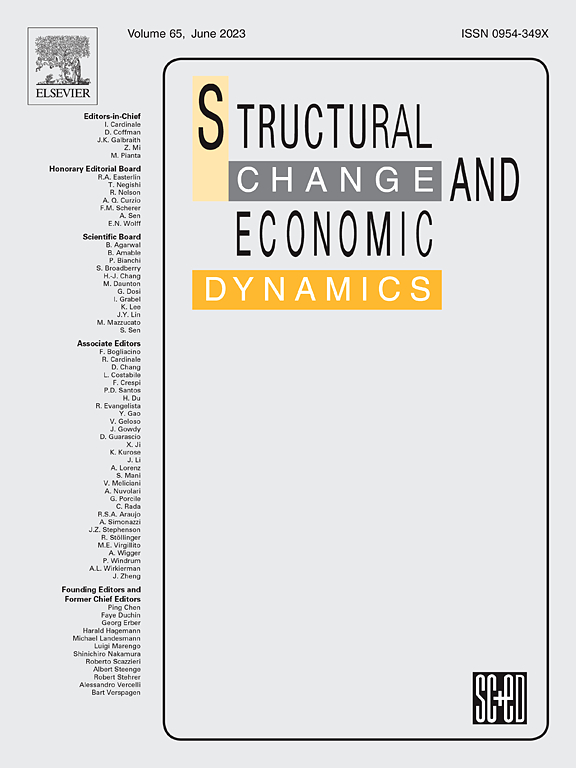Structural change, vertical integration and KIBS: Does “fighting” for manufacturing matter?
IF 5.5
2区 经济学
Q1 ECONOMICS
引用次数: 0
Abstract
This study investigates how shifts in the manufacturing workforce and value-added influence the integration of KIBS. Using a subsystem approach alongside econometric analysis, we examine the relationship between vertical integration and the contribution of manufacturing to value-added between 2000 and 2014. The findings reveal that a decline in manufacturing in the United States, Japan, and EU15 correlates with reduced KIBS inputs. In response to growing competition from China, these regions have adopted vertical integration strategies, emphasizing Specialized, Scale-Intensive, and Science-Based Supplier subsystems. This study finds that while vertical integration benefits the Supplier-Dominated, Specialized Suppliers, and Science-Based subsystems, it detrimentally impacts the Scale-Intensive subsystem. European countries have more effectively countered China's influence by leveraging vertical integration within the Supplier-Dominated and Specialized Suppliers subsystems rather than by integrating KIBS. Conversely, the US, with its dependence on large-scale production, has struggled with the rise of China's manufacturing sector, rendering vertical integration less effective.
结构变革、垂直整合和KIBS:为制造业“战斗”重要吗?
本研究探讨了制造业劳动力和附加值的变化对知识密集型产业整合的影响。利用子系统方法和计量经济学分析,我们研究了2000年至2014年间垂直整合与制造业对附加值的贡献之间的关系。研究结果表明,美国、日本和欧盟15国制造业的衰退与KIBS投入的减少有关。为了应对来自中国日益激烈的竞争,这些地区采取了垂直整合战略,强调专业化、规模密集型和基于科学的供应商子系统。研究发现,垂直整合对供应商主导子系统、专业供应商子系统和科学基础子系统有利,但对规模密集型子系统不利。欧洲国家通过利用供应商主导和专业供应商子系统内的垂直整合,而不是通过整合KIBS,更有效地应对了中国的影响。相反,依赖大规模生产的美国一直难以应对中国制造业的崛起,导致垂直整合的效果下降。
本文章由计算机程序翻译,如有差异,请以英文原文为准。
求助全文
约1分钟内获得全文
求助全文
来源期刊

Structural Change and Economic Dynamics
ECONOMICS-
CiteScore
9.60
自引率
4.90%
发文量
159
期刊介绍:
Structural Change and Economic Dynamics publishes articles about theoretical, applied and methodological aspects of structural change in economic systems. The journal publishes work analysing dynamics and structural breaks in economic, technological, behavioural and institutional patterns.
 求助内容:
求助内容: 应助结果提醒方式:
应助结果提醒方式:


